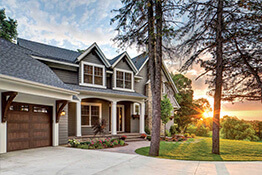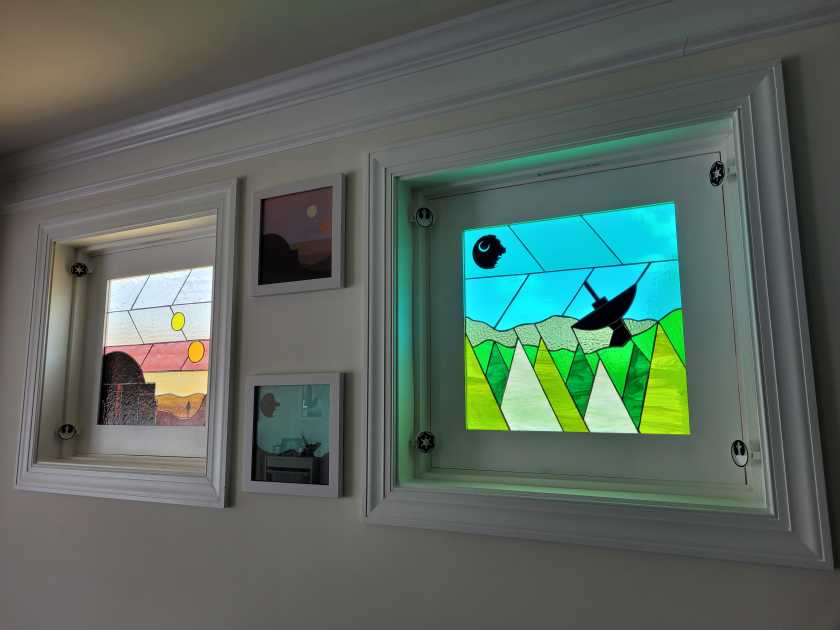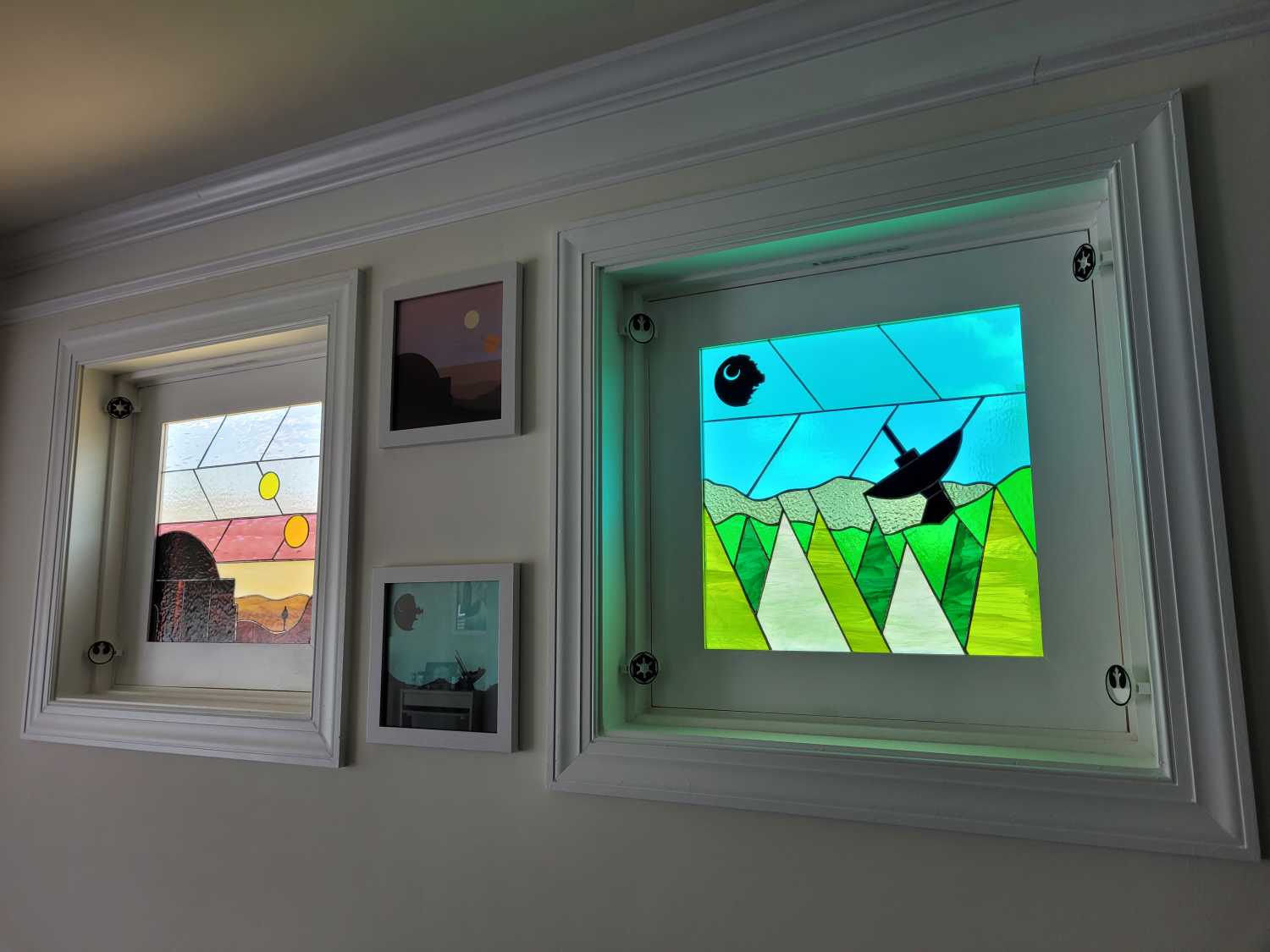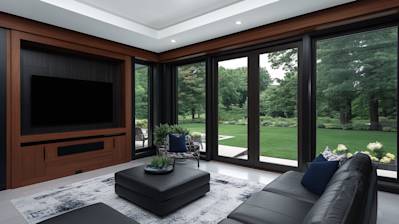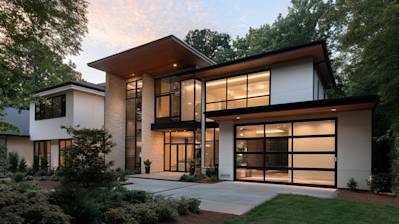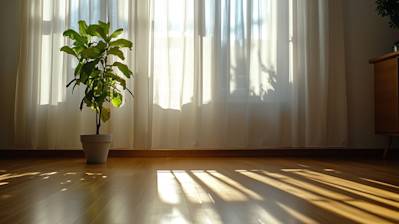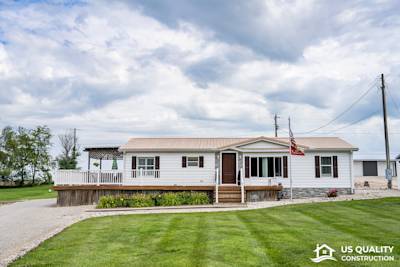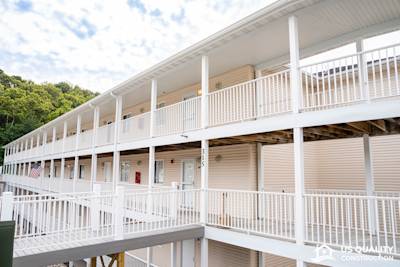Stained glass windows have a rich history and hold a significant place in architectural aesthetics. These intricate pieces of art allow sunlight to filter through various colors, adding a mystical allure to any space. As timeless as they are unique, stained glass windows can add value and charm to homes, churches, and commercial buildings abound. In this comprehensive overview of stained glass windows, we delve into the history, creation process, styles, care, and maintenance of these captivating beauties.
A Glimpse into the History of Stained Glass Windows
Stained glass windows trace their roots back to ancient times. Found in the ruins of Pompeii and other archeological sites, these artifacts reveal the timeless allure of colored glass. However, stained glass windows truly came into their own during the Gothic period, adorning churches and cathedrals, narrating biblical stories and representing saints. Over time, their popularity made way into domestic and commercial architecture, becoming a poignant feature in Victorian homes and Art Nouveau designs.
The Art of Making Stained Glass Windows
Selecting and Cutting the Glass
The process of making stained glass windows begins with the choice of color and texture of the glass. This decision is integral to the final look of the piece. Expert artisans cut the glass to match the pattern of the design carefully.
Coloring and Painting
The glass is then colored using various metallic salts. Techniques such as applying vitreous paint allow for detailed work on the glass. After painting, the glass pieces are fired in a kiln to permanently set the color.
Leading and Soldering
Each piece of colored glass is fitted into a leaded framework known as 'cames'. This holds the glass pieces together. The entire assembly is then soldered to secure the pieces in place.
Prominent Styles of Stained Glass Windows
- Gothic: Known for their pointed arches and biblical depictions, Gothic stained glass windows can predominantly be found in religious architecture.
- Renaissance: Renaissance style is characterized by complex designs and portrayal of detailed landscapes and figures.
- Victorian: With sentimental themes, heavy ornamentation, and vibrant color schemes, Victorian stained glass windows are popular home décor elements.
- Art Nouveau: These windows, featuring organic shapes and flowing lines, stemmed from a love for nature and are loaded with symbolic meaning.
Caring for Stained Glass Windows
Although stained glass windows are resilient, they require periodic care and maintenance to retain their original sheen. Regular dusting with a soft brush, gentle cleaning with distilled water, and professional restoration when needed can prolong their lifespan and maintain their visual appeal.
The Timeless Allure of Stained Glass Windows
Regardless of the modern architectural advancements, the timeless appeal of stained glass windows remains unscathed. Whether it's a vintage-style design gracing a historical building or a contemporary piece in a modern home, these windows continue to fascinate and inspire. Offering an unparalleled combination of art, tradition, and utility, stained glass windows truly stand the test of time.
Frequently Asked Questions About Stained Glass Windows
How are stained glass windows made?
Creating stained glass windows is a multi-step process that incorporates different techniques such as designing, glass cutting, leading, soldering, and cementing. The process typically begins with the design of a window scene or pattern on a piece of paper. The pattern is then cut out and serves as a stencil for cutting the glass pieces. Once the glass pieces are cut, they are assembled using lead cames to create the pattern or scene. Finally, the pieces are soldered together and cemented for solidity. Some artists also add a patina to finish the window.
What is the history of stained glass windows?
The history of stained glass windows can be traced back to ancient times. The Romans are credited with being the original creators of stained glass, though it wasn't until the Middle Ages that this art form began to flourish, thanks to Gothic architecture. Churches and cathedrals began to feature large, ornate stained glass windows that depicted biblical stories and saints. During the Renaissance period, stained glass continued to evolve, showing more realistic and intricate designs. Today, stained glass windows can be found in houses of worship, public buildings, and private homes, showcasing both traditional and modern designs.
Where can I find stained glass windows?
Stained glass windows can be found in a variety of places. Historic and religious buildings usually house the most traditional forms of stained glass art. These can be seen in places such as churches, cathedrals and mosques. In recent times, stained glass windows have found their way into residential homes, often being used in entryways, bathrooms and as decorative elements in living rooms. They are also prevalent in commercial establishments like hotels and upscale restaurants. Lastly, you can find beautiful examples of stained glass in museums.
How do I clean and maintain stained glass windows?
Stained glass windows require gentle care to maintain their beauty. For routine cleaning, a soft cloth and a mild soap solution often works well. It's best to avoid harsh cleaners, as they may damage the glass or lead. If the window is very dirty or has not been cleaned in a while, a professional stained glass restorer is recommended. In terms of maintenance, inspect your windows regularly for any signs of deterioration like cracking or bending in the lead. If repairs are needed, contact a professional immediately to prevent further damage.
Can stained glass windows be repaired?
Yes, repairs to stained glass windows are possible and are often necessary to preserve the longevity of these beautiful artworks. Skilled craftsmen can mend broken pieces, replace missing elements, or restore faded colours. However, due to the intricate and detailed nature of stained glass windows, it is strongly advised to seek professional help when repairs are required.
What do stained glass window colours symbolise?
Colour plays a significant role in stained glass windows, with each hue carrying its unique symbolism. Traditionally, blue represents heaven or divinity, yellow or gold symbolises divine light or the sun, red stands for love or passion, green is synonymous with growth or fertility, and purple signifies royalty. However, in modern stained glass design, the colour's symbolism can vary widely based on the artist's intent or the viewer's interpretation.
Can I custom design a stained glass window?
Absolutely! Custom designing your stained glass window allows you to express your unique vision. When you choose to custom design a window, you get to pick the size, shapes, colours, and patterns. Many stained glass artisans offer this service. Keep in mind that the complexity of your design and the quality of materials chosen will affect the final cost of your project.
Pros and Cons of Stained Glass Windows
Pros of Stained Glass Windows
Artistic Appeal
- One of the most captivating advantages of stained glass windows is their inherent artistic appeal. Artists use different techniques to create beautiful designs and patterns on these windows.
- With such a wide variety of colors, shapes, and designs to choose from, they add a unique aesthetic to any space.
Privacy
- Stained glass windows keep prying eyes out without blocking natural light, a feature that sets them apart from conventional curtains or shades.
- This high level of privacy is particularly useful for windows that face busy streets or spaces where privacy is paramount.
Light Enhancement
- Stained glass windows enhance natural light by diffracting incoming sunlight into a burst of colors, creating a visually attractive and serene environment.
- This diffused light also reduces harsh shadows and creates a softer, gentler light inside your home or office.
Durability
- Another strength of stained glass windows is their impressive durability. With proper care and maintenance, these windows can last a lifetime without losing their charm.
- Stained glass is resistant to wear, tear, and environmental degradation, making it ideal for both interior and exterior applications.
Cons of Stained Glass Windows
Cost
- One downside of stained glass windows is their cost. High craftsmanship and manual labor intensify the production costs, which increases the market price of these windows.
- Custom-made designs are considerably more expensive, and the restoration or repair cost is substantial as well.
Limitations in Design Updates
- Although stained glass windows are stunning, they are also static and cannot be easily updated like curtains or blinds. Changing the design often involves complete replacement, which is both time-consuming and costly.
Vulnerability to Breakage
- Despite their durability, stained glass windows remain vulnerable to breakage. Sharp impacts, stress fractures, or harsh weather conditions can cause significant damage.
- The complexity and high cost of repair are other reasons behind the downfall of these windows.
Light Filtering
- Even though stained glass windows manipulate light into a visual feast, they can also limit the amount of light that comes in. This can lead to a darker interior, which might not be ideal for individuals who prefer more daylight filtering into their home or workspace.
Temperature Conduction
- Stained glass windows aren't as efficient at isolating indoor temperatures from outdoor environments as double-pane glass windows. They might allow more heat to escape during colder months and let more heat enter during warmer months, which can lead to higher energy costs.
Summary
So, stained glass windows are more than just tangible objects that provide shelter from the external environment. They are works of art that portray stories, reveal history, and trigger emotions in people who behold them. The intricate designs, vivid colors, and captivating patterns found in these windows make them a treasure to behold and an element that enhances the artistic appeal of a given space.
These stained glass windows have moved beyond the confinements of churches and cathedrals, finding a special place in modern homes and public buildings. Their legacy stands as a testament to the fusion of practicality and artwork in architectural design. Cherishing and preserving these wonders of human ingenuity, is our homage to the legacy of countless artisans who found joy in creating these timeless pieces.
Whether it's the radiant glow on a sunny day or their steadfastness against the elements, stained glass windows inspire awe and admiration. Their resilience and adaptability over centuries is a tale of human creativity at its pinnacle. So, the next time you pass by a stained glass window, take a moment to marvel at the story it tells, the colors it sends dancing through the air, and just how utterly magical it is!
About US Quality Construction
Welcome to US Quality Construction, a leading construction company based right here in Kansas City, MO! We pride ourselves on delivering high quality work that brings our client's dreams to life. From home renovations to large scale commercial projects, we do it all. We've been a part of this community for years and our commitment remains strong - building structures that stand the test of time while boosting the growth and prosperity of our beloved city. We can't wait to help you turn your next big construction project into a reality!
Tags: stained glass windows, artistic design, craftsmanship,
